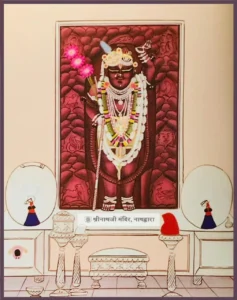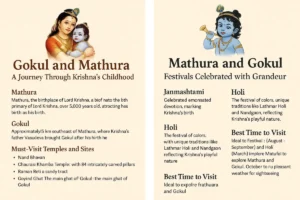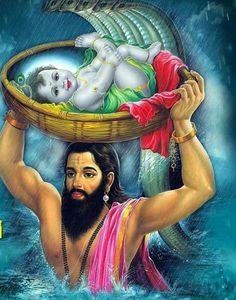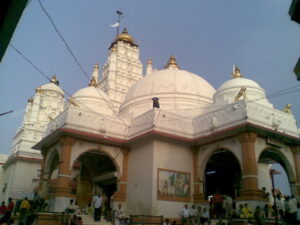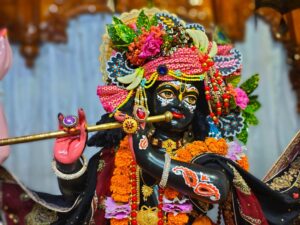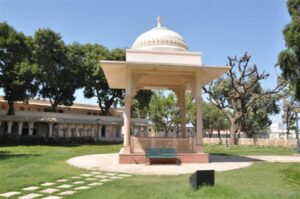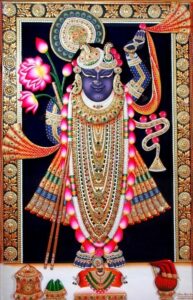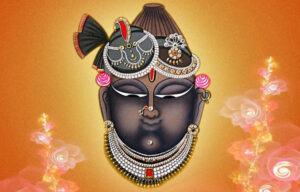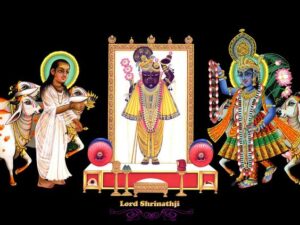Shreenathji Temple (Srinathdwara) Travel Guide The holy town of Nathdwara, also known as Srinathdwara, is home to the famous Shreenathji Temple, dedicated to Lord Krishna. Located in...
Read More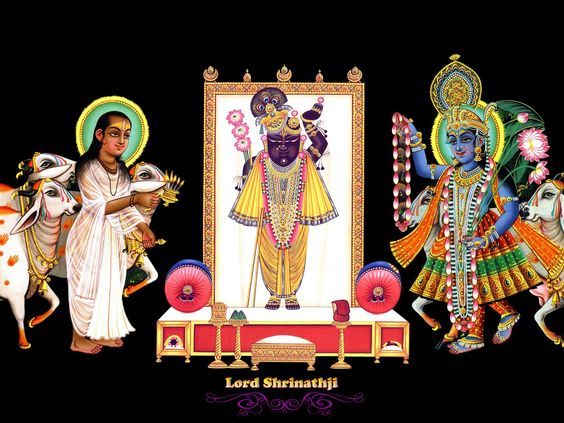
Nathdwara Darshan Time
Date: June 7, 2025
Mangla/मंगला
05:45am to 06:40am
Shringar / -श्रृंगार
07:15am to 07:45am
Rajbhog / राजभोग
11:15am to 11:55am
Uthapan / उथापन
03:45pm to 04:00pm
Bhog-Arti/ आरती
04:45pm to 05:55pm
Blogs
Gokul and Mathura: A Journey Through Krishna’s Childhood
Gokul and Mathura, nestled in the heart of Uttar Pradesh, are not just towns but sacred realms echoing the divine tales of Lord Krishna’s early life. These...
Read MoreShri Krishna’s Birth Story: A Divine Saga
The birth of Lord Krishna is one of the most celebrated and revered tales in Hindu mythology. It is a story filled with divine interventions, profound teachings,...
Read MoreHistory of Dakor temple
The Legendary Ranchhodraiji In the vibrant state of Gujarat, there stands a renowned pilgrimage site known as Dakor Dham, home to the famous Krishna temple dedicated to...
Read MoreThe Birth of Lord Krishna: A Tale of Love, Sacrifice, and Divine Intervention
Birth of Lord Krishna The joyous festival of Krishna Janmashtami celebrates the birth of Lord Krishna, one of the most beloved and revered deities in Hinduism. Lord...
Read MoreDiscover the Rich History and Spirituality of Mathura
Ancient Roots and Cultural Significance Mathura, also known as Vrindavan, is a city in the state of Uttar Pradesh in India. Situated on the banks of the...
Read MoreThe Importance of Govardhan Puja in Vrindavan
Introduction In the city of Nathdwara, located in Rajasthan, India, there is a famous temple called Shrinath Ji Mandir. This temple is dedicated to Lord Krishna, also...
Read MoreDiscover Shrinathdwara: Spiritual Bliss & Cultural Splendor at Shrinathji Temple
Introduction Nestled in the vibrant state of Rajasthan, Shrinathwara stands as a beacon of spiritual tranquility and cultural heritage. Dominated by the sacred presence of the...
Read MoreShrinathji Ka Prakatya
Shri Govardhan is decorated with gems in Golok Dham. There Shri Thakurji performs rituals with Govardhanathji, Shri Swaminiji and Braj devotees in the Kandara of Giriraj. It is a...
Read MoreHISTORY OF NATHDWARA
Importance of Nathdwara Shreenathji’s (Krishna’s) city of Nathdwara is located in the Rajsamand district of the Indian state of Rajasthan. It is 48 kilometres to the northeast...
Read More
